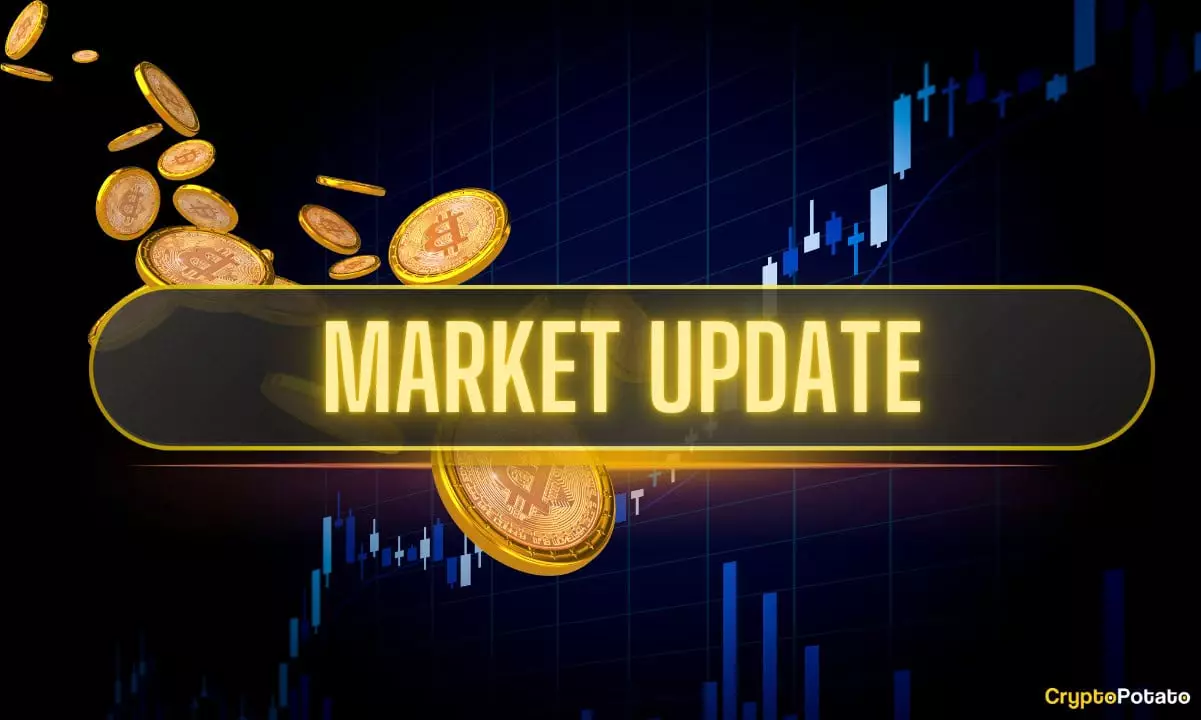President Donald Trump’s erratic approach to global trade has unleashed a storm that not only rattles American industries but also sends shockwaves through the cryptocurrency markets. With tariffs slapped across nations like a child with a paintbrush, he has opened Pandora’s box of volatility that Bitcoin and other cryptocurrencies are struggling to contain. The recent week has showcased how a flexing trade muscle can directly corrode investor confidence, particularly for those who are keen on digital assets. The experience has been likened to a rollercoaster ride, where the outcome remains unpredictable and perilous.
This week, Bitcoin’s price dramatically oscillated, prompted by Trump’s announcement to tax all countries at a minimum of 10%, with particularly punitive measures aimed at larger economic players. This proclamation went beyond conventional financial strategies, gifting us a ringside view of market chaos. Witnessing Bitcoin crumble from a stronghold of $84,000 to a daunting low of $74,000 signals more than mere price fluctuations; it’s a testament to how intertwined international trade policies and digital currency valuations have become.
A Sluggish Weekend Lurks Beneath the Surface
As expectations loomed heavily in the weekend following “Liberation Day,” many investors remained paralyzed by uncertainty. Bitcoin’s stagnant trading around $82,000 to $84,000 might have appeared comforting on the surface, but as history teaches us, still waters often run deep. The stagnant behavior mirrored the general sentiment among traders — be wary, be wary of the dark clouds brewing over the economic skyline. By evening, that facade vanished, sending prices tumbling once again as Trump’s threats towards China loomed larger.
The cyclical nature of recovery attempts seems to have faltered under the weight of political posturing. Just as Bitcoin appeared to gasp for breath, it was once again smothered as warning bells tolled for further tariff increases, dragging it down by the mid-week to alarming lows. What’s alarming is that in the face of this volatility, instead of stabilizing measures from the government, we have witnessed a presidency steeped in punitive economic strategies.
Ethereum’s Distress in the Face of Turmoil
Meanwhile, Ethereum’s descent offers another insight into just how perilous the crypto market can be during turbulent political maneuvers. Having witnessed a staggering 13% decrease over the week and plummeting to a meager $1,400, it is clear that even the second-largest cryptocurrency isn’t immune from the fallout. The correlation between market confidence and political decisions has never been more apparent; the two exist in a fragile balance, and when that is disrupted, the consequences can be catastrophic.
Ethereum’s declining trend begs the question: Are we witnessing the end of an era or merely the dark before dawn? Analysts remain cautiously optimistic, hinting at a robust rebuild, but such optimism often feels misplaced amidst the chaos. The digital currency arena is rife with speculation and fear, and the recovery will need profound motivation to reinvigorate investor confidence.
The Ripple Effect of Political Realities
In the midst of ongoing legal battles, Ripple has been maneuvering through turbulent waters with the SEC, and there lurks the potential for settlement—an optimistic narrative amid grim times. But how does one reconcile a thriving cryptocurrency narrative when faced with such legislative challenges?
Additionally, significant domestic movement, such as the largest BTC inflow into accumulation wallets since 2022, points to a paradox. Are long-term holders recognizing the potential gains amidst chaos, or are they simply bracing for the worst? This influx indicates a cautious bullish sentiment, a stark contrast to the panic-filled rapidly dropping altcoin market.
Investor Psychology and Market Dominance
It seems the real battle in the cryptocurrency market isn’t just about coin valuations but also about the psychology of its participants. Bitcoin remains dominant, but its fortitude is more a product of tradition than triumph. With a market cap chasing $2.7 trillion whose dominance rests at a shaky 60.6%, the question of sustainable growth persists.
Observing this landscape, one can’t help but feel that the recent trade actions propelled by Trump are a grim symptom of short-sighted policy. Rather than fostering an ecosystem of innovation and investment, the heavy-handed tariffs stifle the entrepreneurial spirit that cryptocurrencies embody. The market’s response to one man’s whims underscores just how fragile the digital asset realm remains.
As we march forward, whether it is the Fed, the Chinese PBoC, or more of Trump’s unpredictable tariffs that send Bitcoin soaring or plummeting, the current landscape screams for reform. What is undeniably true is that investors, both seasoned and rookies alike, are losing patience for a more stable system. The cry for smart governance has never been louder.

